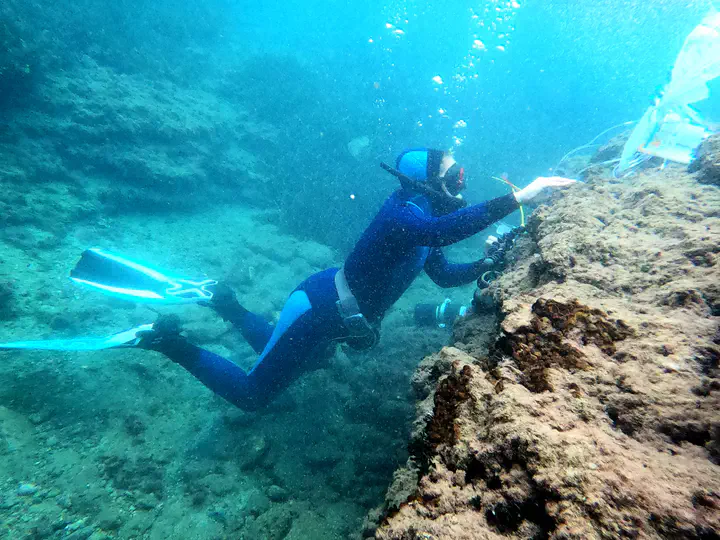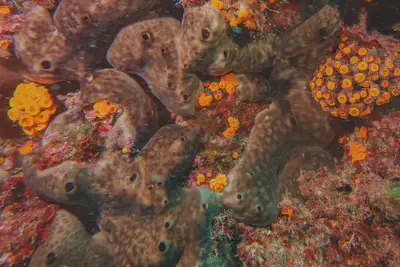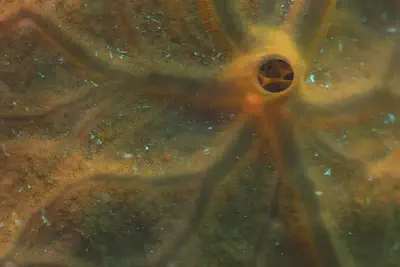Microbial and Metabolic Interactions in Sponges under Ocean Acidification
 Testing my new developed sampling method in the field
Testing my new developed sampling method in the fieldOcean acidification (OA) represents a threat to marine ecosystems, and benthic organisms must develop adaptive strategies. Marine sponges are often forecasted as winner taxa, yet, we lack holistic understanding of stress tolerance and positive acclimatization. Sponges can be categorized into high and low microbial abundance (HMA and LMA) species, which may adopt divergent strategies to maintain homeostasis and fitness under changing conditions. For this project we collected the HMA sponge Chondrosia reniformis and the LMA sponge Spirastrella cunctatrix from a natural CO2 vent system and a control pH site (Ischia, Italy). Adaptive traits were investigated by comparing microbial and metabolic shifts in sponge holobionts. I analyzed Illumina Next-Generation-Sequencing 16S rRNA data to reveal differences in microbiome composition under OA and estimate possible impacts on sponge health. Furthermore, I extracted sponge specimens chemically for NMR metabolomics and revealed significantly dysregulated metabolites with correlation to specific microbial taxa.


During my PhD, I further developed a new in situ sampling methodology to expand our knowledge of organismal acclimatization processes towards biochemical exchanges with the environment. The produced sampling device aims at facilitating the study of inhaled and exhaled water fluxes of filter-feeders, such as our test sponge C. reniformis. This method can be applied for a variety of ecology research topics, such as nutrient cycling, plankton dynamics and seawater metabolomics.
The following video visualizes the water flow through the sponge Chondrosia reniformis due to its constant pumping activity. The coloured water is inhaled through little pores on the sponge surface, called ostia, and is exhaled through the so-called oscula. During this water filtration process numerous biochemical and microbial processes take place: